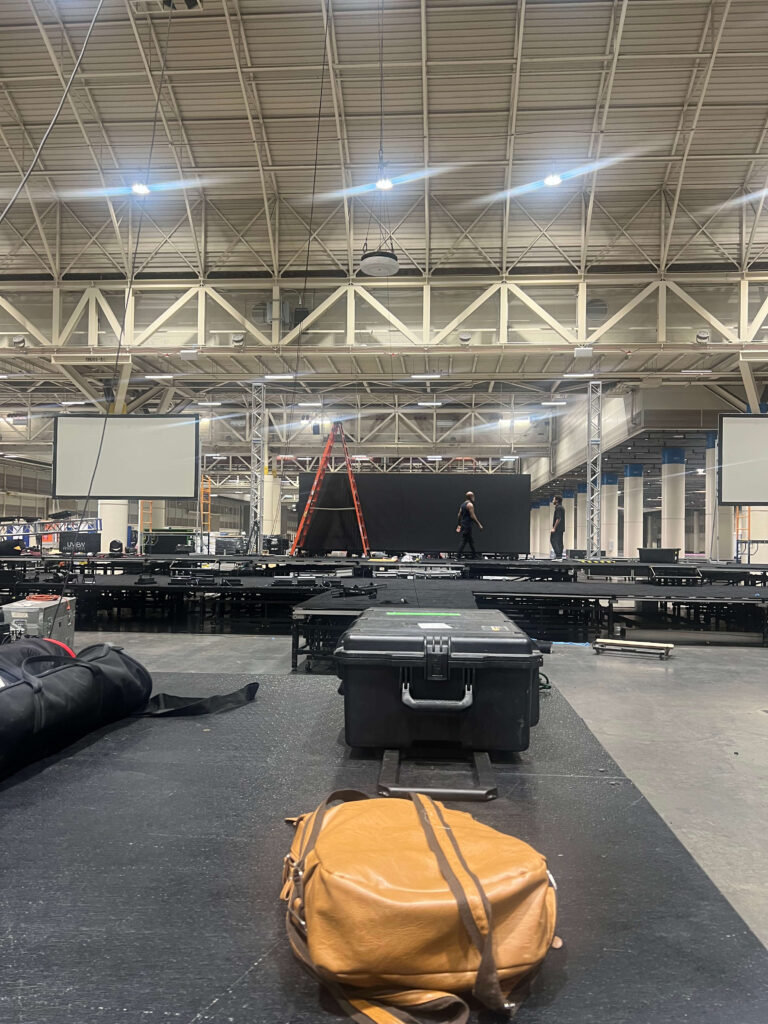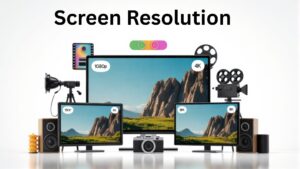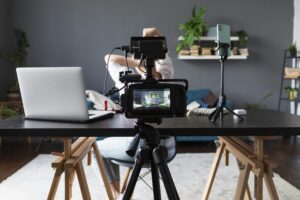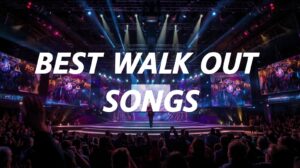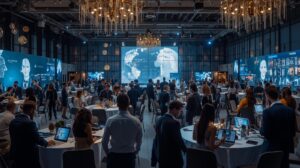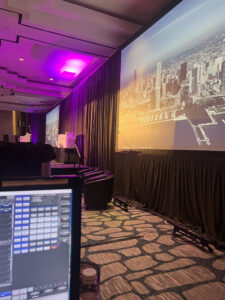Concert lighting is a core part of every live music event. It helps the audience see the performers, follow the action, and stay focused on the stage. It can shift the focus, match the pace of the song, or signal a key moment without saying a word. Without proper lighting, even the best performance can feel flat or confusing.
Each light has a specific job. Some lights provide general coverage. Others highlight individual performers or create visual effects. Together, they form a complete system that supports the flow of the show.
There is no one-size-fits-all setup. A small indoor concert does not need the same lights as a large outdoor festival. The size of the stage, number of performers, type of music, and audience size all affect the lighting plan.
Before diving into the specifics of concert setups, it’s helpful to understand the broader landscape of lighting options.
Types of Lighting Fixtures
There are various types of lighting fixtures commonly used in concert stage lighting. Here are a few types used in concert lighting:
1. PAR Cans
PAR cans are basic stage lights that produce a steady, wide beam. They’re used to light large areas of the stage in a single color. These lights are fixed in one position and do not move during the show.
Use PAR cans to:
- Cover the stage in light.
- Create color washes across the band.
- Add background color to support the mood of the song.
They are simple, reliable, and work well in almost any concert setup
2. Spotlights and Follow Spots
Spotlights create a narrow, focused beam. Follow spots are a type of spotlight operated manually to track performers as they move.
Use these lights to:
- Highlight the lead singer or soloist.
- Direct attention to key moments or actions on stage.
- Keep one performer visible while others are in lower light.
They help control what the audience looks at.
3. Wash Lights
Wash lights spread light evenly across the stage. They’re used to fill gaps that other lights can’t cover. These lights help balance brightness and remove shadows.
Use wash lights to:
- Cover the whole stage in soft, even light.
- Add general color without hard edges.
- Blend with spotlights and effects for a smooth look.
They are often used as background lights that run throughout the performance.
4. Moving Head Fixtures
These lights move during the show. They can pan, tilt, change colors, and adjust brightness. They’re used to create motion and variety.
Use moving heads to:
- Add energy during fast songs.
- Highlight different areas of the stage without moving the lights manually.
- Build visual effects that change with the music.
They’re common in larger shows where lighting needs to be flexible.
5. Strobe and Effect Lights
Strobe lights flash quickly to match beats or sudden moments in the music. Effect lights include beams, lasers, or pattern lights that create visual excitement.
Use strobes and effects to:
- Create a burst of energy.
- Emphasize strong beats or dramatic drops.
- Build impact during transitions.
Use them briefly. Overuse can be distracting or uncomfortable for the audience.
6. LED Panels and Pixel Mapping
LED panels display colors, patterns, or video content. Pixel mapping lets each section of the panel change independently to match music or movement.
Use LED panels to:
- Create a dynamic backdrop.
- Sync visuals with the lighting cues.
- Add visual interest without blocking the stage.
These are often used in large concerts with more complex visual setups.
Related Read: Want to learn more about the lighting used at events? Check out the 12 Common Types of Event Lighting to see which fixtures can make the biggest impact.
Lighting Control Systems For Concert Stage Lighting
DMX Protocol
DMX (Digital Multiplex) is the standard signal used to control stage lighting. It sends commands from the lighting console to each fixture through a data cable.
Use DMX to:
- Set brightness, color, and movement.
- Control timing for cues and effects.
- Link all lights to respond from a central controller.
Without DMX, each light would have to be operated by hand. DMX allows full control from a single point.
Lighting Consoles and Software
The lighting console is the control panel for all stage lights. It sends DMX signals to control each light. Some setups also use lighting software, which works alongside the console to program cues and effects.
Use a console or software to:
- Program lighting scenes before the show.
- Adjust lights in real time during the performance.
- Store presets for quick access during live changes.
Modern consoles come with screens, buttons, and faders to control each aspect of the lighting system.
Pre-programming vs Live Operation
Lighting can be handled in two ways: programmed in advance or operated live.
Pre-programming means lighting cues are set before the show and run automatically based on a setlist. This works well for concerts with a fixed order and timing.
Live operation means a technician adjusts the lighting in real time. This is useful when performers change the pace or flow of the show during the event.
Choose pre-programming if the show follows a fixed plan. Use live operation if the performance needs flexibility. Some shows use a mix of both.
Lighting Design for Different Concert Sizes
Lighting needs to match the size and type of concert. A setup that works in a club won’t work in a large stadium. The right lighting design depends on space, audience size, and technical limits.
Small Indoor Gigs
Small gigs happen in bars, clubs, or local halls. Space is limited, and power sources are often basic.
For these setups:
- Use compact lights like PAR cans and a few wash lights.
- Focus on basic front and back lighting to keep performers visible.
- Add one or two small moving heads if needed, but only if space allows.
Don’t crowd the stage with too many lights. Keep the setup simple and reliable.
Medium-Sized Venues
These include theaters, mid-sized event halls, or gymnasiums. There’s more room for fixtures and a better power supply.
For these setups:
- Use a mix of PAR cans, wash lights, and moving heads.
- Add follow spots to highlight lead performers.
- Use color changes and transitions to match song shifts.
Plan zones for lighting, front, sides, and overhead. So each area of the stage is covered clearly.
Large-Scale Outdoor Festivals
Outdoor festivals need powerful lighting. The stage is larger, and lights must compete with daylight and distance.
For these setups:
- Use high-output wash lights, strong follow spots, and a full grid of moving heads.
- Add LED walls or panels for visuals and background lighting.
- Use weather-rated gear to protect from rain, heat, and wind.
Make sure the lighting reaches the back of the crowd. Use trusses and towers to raise fixtures above the stage for wide coverage. Backup power and safety checks are also necessary.
Common Lighting Setups & Configurations
Front Lighting, Backlighting, Sidelighting
Front lighting shines light from the audience’s direction onto the performers. The purpose of front lighting make faces and movements visible. Place these lights at or slightly above eye level for natural visibility.
Backlighting comes from behind the performers, aimed toward the audience. It creates a bright outline around performers, helping separate them from the background. This adds depth and prevents the stage from looking flat.
Sidelighting is placed on the left and right edges of the stage. It reduces shadows created by front lighting and adds texture. Sidelights highlight movements and give shape to performers’ bodies.
Using all three lighting setups creates a balanced, three-dimensional look. This setup ensures performers are visible from all audience angles without harsh shadows or flat lighting.
Color Mixing and Mood Transitions
Color mixing allows lights to create different colors by combining red, green, and blue. Instead of using only fixed colors, you can adjust lighting tones to match the mood of each song.
For example:
- Warm colors like red and amber can create energy or tension.
- Cool colors like blue or purple can slow the pace or bring a calm feeling.
- Quick color shifts can match fast songs.
- Slow fades work better for slower or emotional parts.
Use color transitions to:
- Match the lighting with the tone of each song.
- Shift from warm to cool tones to reflect mood changes.
- Avoid using the same color for too long, which can flatten the scene.
Mood transitions are the changes between these lighting colors. These changes must match the music. If the music shifts tone, the lighting should shift too.
Use color changes to support what’s happening on stage, not to distract. Avoid using the same color for too long. Change the lighting when the song changes, the tempo changes, or the spotlight moves.
This is what you should do:
Plan your color changes based on the setlist. Use a limited number of colors per song. Keep transitions smooth, not sudden, unless the music demands it.
Cue Synchronization with Live Music
Cue synchronization means lighting changes at the exact moment something changes in the music, like a beat drop, chorus, or solo. These changes can be pre-programmed or done live by a lighting operator.
Pre-programmed cues work well when the setlist and timing are fixed. The lighting follows a script. This allows precise timing for every light change without delay.
Live-operated cues are handled manually during the performance. A technician listens to the music and triggers lighting changes in real time. This is useful when the performance includes improvisation or varies from show to show.
Use cue synchronization to:
- Match lighting effects with sound changes.
- Highlight key moments like instrument solos or tempo shifts.
- Keep the show visually in sync with the music.
What you should do:
Rehearse with the performers when possible. If the setlist is locked, pre-program the cues. If not, assign an experienced operator to run lights live and follow the music closely. Do not guess or delay lighting changes, mistimed cues break the flow.
Safety and Technical Considerations for Concert Lighting
Concert lighting must be safe, stable, and suited to the venue. Poor planning can lead to equipment failure, injury, or delays. Every part of the setup, from how lights are hung to how power is used, needs careful checks before the show begins.
Rigging and Truss Systems
Rigging holds lights above the stage. Truss systems are metal frames where lights are attached. These must be strong enough to support the total weight of all fixtures.
What you should do: Use certified rigging hardware. Check weight limits before hanging any lights. Always secure lights with safety cables. Never rely on one attachment point.
Power Load Distribution
Lighting uses a lot of electricity. Overloading a circuit can cause a power failure or damage. Each light must be connected to the right outlet based on how much power it needs.
What you should do: Calculate total power use before setup. Spread lights across multiple circuits to avoid overload. Use reliable cables, connectors, and power strips rated for live events.
Weatherproofing for Outdoor Shows
Outdoor concerts face rain, wind, and extreme temperatures. Lights and cables must be protected to prevent water damage or accidents.
What you should do: Use weather-rated lighting gear. Cover plugs and cables with waterproof shields. Keep control systems off the ground. If there’s a risk of storms, have a plan to shut down power quickly.
How to Design a Concert Lighting Setup?
Step 1: Know the Stage and Audience Area
At first, inspect the space where the stage will be set. Measure the stage width, height, and depth. Also, consider where the audience will sit or stand. This helps decide where lights can be safely placed and how wide the coverage needs to be.
What you should do: Sketch a simple layout with the main stage, audience zones, and key lighting positions.
Step 2: Define Lighting Goals
Decide what you want the lighting to do. Basic visibility? Dramatic effects? Sync with fast-paced music? Knowing the goals early avoids wasting time with lighting that doesn’t fit the performance.
What you should do: List lighting goals by category: visibility, motion, color effects, mood, timing.
Step 3: Choose the Right Fixtures
Select lights based on what each area needs. Use PAR cans for washes, spotlights for solos, moving heads for motion, and strobe or effect lights for peak moments.
What you should do: Match each lighting goal to a specific fixture. Don’t mix too many types—you want function, not clutter.
Step 4: Plan Lighting Positions
Place lights where they’ll work best. Use front lights for faces, backlights for depth, and sidelights to reduce shadows. Keep lights off the ground where possible to avoid crowd interference.
What you should do: Draw lighting positions on your layout. Mark which lights serve which zones.
Step 5: Set Up Lighting Control
Use a lighting console or software that supports DMX control. Pre-program cues if the show follows a setlist. Use live control if the performance is unpredictable.
What you should do: Keep controls simple. Assign clear labels to each group of lights. Test before the event starts.
Step 6: Check Power and Safety
Make sure your power supply matches the total load. Distribute lights across circuits to avoid shutdowns. Use safety cables, stable rigging, and weather protection if outdoors.
What you should do: Inspect all connections and test each light before the event begins.
Step 7: Rehearse and Adjust
Run a full test. Walk through key lighting changes. Fix any blind spots, uneven fades, or slow transitions.
What you should do: Have someone stand in different crowd areas during the test. Adjust the lights that don’t cover properly.
Benefits of Hiring a Professional AV Company for Concert Stage Lighting
Concert lighting requires planning, setup, and real-time control. Mistakes can cause delays, equipment failure, or poor audience experience. Hiring a professional AV company solves these problems with trained staff and the right tools.
Expert Design and Execution
A professional AV team knows how to design lighting that fits the size of the venue, matches the type of performance, and works within your budget. They understand what lights to use, where to place them, and how to control them.
Equipment Sourcing and Maintenance
Professional AV companies bring high-quality lighting gear that’s ready to use. They maintain and test their equipment before every event. You don’t have to rent separate gear or worry about faulty lights.
Real-Time Troubleshooting
If a concert lighting fails or the system lags during the show, a skilled technician can fix it right away. This prevents delays or dark spots on stage.
Seamless Integration with Sound and Video
Lighting must work together with audio and video. A professional team can sync all elements, so lighting matches the beat, visuals, and mood without delay or confusion.
Why Choose Huview Productions for Your Concert Lighting Needs?
Huview Productions is an Audio visual production company in Atlanta that specializes in delivering professional lighting for concerts of all sizes. We handle all types of lighting design, setup, and live operation, so artists and organizers can focus on the show, not the equipment.
We offer custom lighting solutions for events designed to transform any concert or live show into an unforgettable experience. Whether you need dynamic stage lighting, multimedia integration, or intelligent lighting control, our expert team ensures every detail shines.
If you’re planning a concert in or around Atlanta and need lighting that performs without fail, Huview Productions brings the team, tools, and experience to make it happen, backed by our reputation as one of Atlanta’s trusted AV production companies.
Conclusion
If you’re organizing a concert, don’t take chances with your lighting. Work with professionals like Huview Productions who understand how to build reliable systems that fit the size and type of your event. We offer AV Productions for Concert events in Atlanta that include lighting design, sound engineering, video support, and real-time show control, all tailored to your audience and stage.
Get in touch with Huview Productions today to plan lighting that works, looks great, and supports your entire live show.

